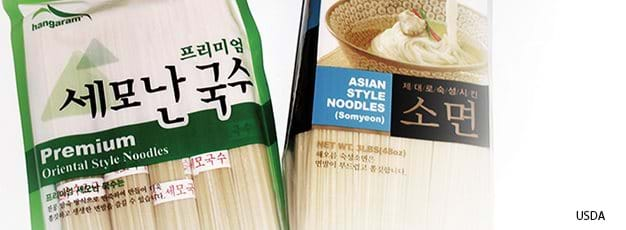Will Hard White Wheat Become a Sustainable Wheat Class?

Hard white wheat (HWW) has gained popularity in the domestic market and overseas, particularly in Asia. HWW has the potential for yielding 1-3 percent more flour than other wheats. Its end-use characteristics—such as lighter color in bread made from HWW flour and good color stability and noodle texture—are particularly well-suited for whole-wheat products, pan breads, tortillas, and certain kinds of oriental noodles.
Though U.S. wheat farmers have grown mostly hard red winter and hard red spring wheats, many State breeding programs began refocusing their wheat breeding toward HWW in the mid-1990s anticipating rising demand for its end-use characteristics. By the late 1990s, Kansas State University was devoting three-quarters of its program to HWW. Other States soon followed suit.
HWW plantings spiked in 2003. A major factor contributing to this was a $20 million government incentive program created by Congress for 2003-05. Farmers receive $0.20 per bushel for high-quality HWW (denoted as U.S. grade No. 1 or No. 2), which, in 2003, together with other potential government payments, amounted to about 10 percent of the expected farm price. These incentive payments, combined with newly released, higher yielding varieties and above-average quality attributes, caused HWW plantings to nearly triple in 2003 to 900,000 acres, up from 310,000 in 2002. Still, HWW production accounts for barely over 2 percent of all wheat acreage in major HWW-producing States, and sales are mostly limited to domestic milling.
The expansion of HWW acreage is limited by concerns over the risk of sprout damage, caused by excessive precipitation after the crop has matured. The 2004 HWW crop suffered widespread sprouting, particularly in Kansas, where sprouting affected 40-50 percent of the crop. Affected producers lost their incentive payment when their wheat graded worse than No. 2. However, they were not entitled to crop insurance indemnity payments for quality loss unless their wheat graded No. 5 or worse. Thus, producers with wheat graded No. 3 or 4 received neither payment.
The discontinuation of the incentive program beyond the 2005 crop and concerns that sprout damage could recur will likely slow the expansion of HWW production. In addition, strong competition from Australia and Canada in the Asian noodle markets makes it unlikely that the marketplace will generate strong price premiums for HWW. Continuing expansion of HWW production thus depends on the development of new, higher yielding varieties that are more tolerant to sprout damage.
Hard White Wheat At A Crossroads, by William Lin and Gary Vocke, USDA, Economic Research Service, December 2004
Wheat, by Andrew Sowell , Bryn Swearingen, and Todd Hubbs, USDA, Economic Research Service, August 2024

